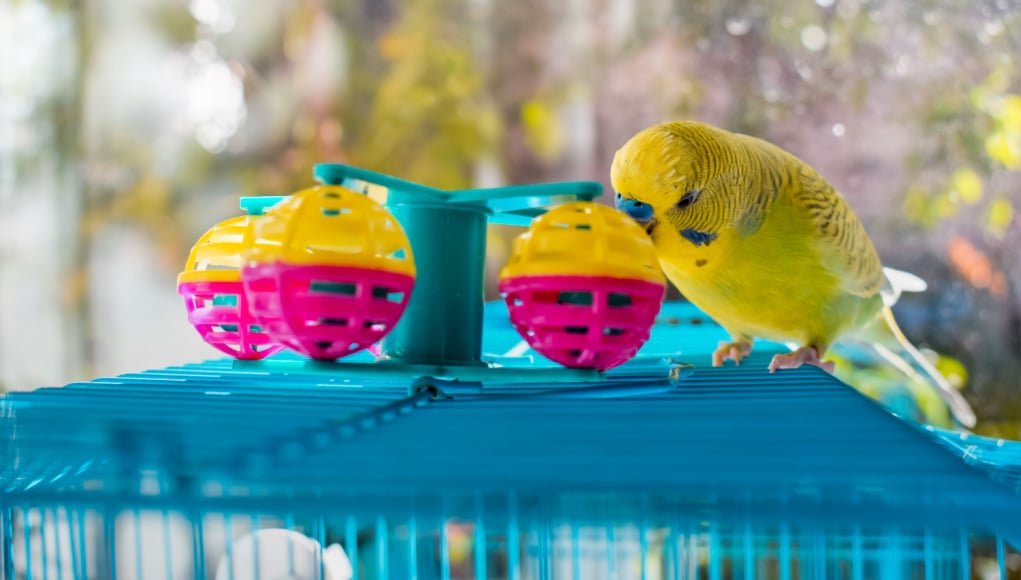Does your bird have designated playtime outside of the cage? Avian creatures are safer inside their cage but also need time to explore the outside world and learn new experiences, just like humans.
But why is it necessary and beneficial?
In this article, we’ll discuss the following:
- Why playtime outside of the cage is vital to your bird’s health
- How long should birds be out of the cage
- And what should you look out for when your avian pet is out of its cage
But before we dive into that, do feathery creatures really need an out-of-cage playtime?
Do Birds Really Need Playtime Outside of The Cage?
直接回答是肯定的!野生鸟类需要exercise and playtime, and so are caged pet birds. They must stretch, fly, or roam and socialize with their humans.
You may not be able to imitate the environment they’re used to in the wild, but you can help them cope and have a little freedom by giving them an out-of-cage playtime.
But how can birds benefit from playtime outside of the cage?
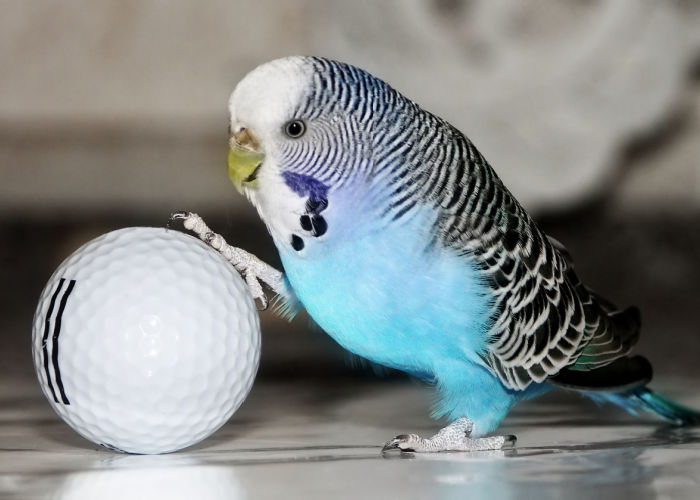
Benefits of Having Playtime Outside of the Cage For Birds
Here are the advantages of having dedicated playtime outside of the cage:
Allows Them to Explore
Birds enjoy discovering new sights, sounds, and scents, so giving them time out of the cage to explore can help them learn from new things and experiences.
Reduces Loneliness and Other Physiological Ailments
鸟会的受害者孤独,抑郁,nxiety, and other physiological problems when not given enough time and attention and are in a prison-like cage all the time.
Prevents Obesity
Allowing birds to have playtime outside of the cage can encourage them to fly and exercise, which can help reduce the chances of developing obesity.
Strengthens Bond
Not only will you be able to get Instagram-worthy photo opportunities when your bird is sitting next to you, but playtime outside of the cage can also help strengthen your bond and establish trust.

Pros and Cons of Keeping Birds in Cages All the Time
Although out-of-cage playtime is beneficial, it can also be risky at times. So let’s discuss its pros and cons to weigh whether giving your avian pet a taste of freedom and playing out of its comfortable home is worth it.
Advantages of Keeping Birds Inside the Cage
Let’s discuss first the benefits of keeping your birds in a cage for you and your family.
Safety of You and Your Birds
The first benefit of keeping your avian pet in a cage is protecting them from damage. If birds can fly around the house, they can easily sustain injuries.
Additionally, birds outside are susceptible to attacks by cats, dogs, and other animals. But you can lessen the possibility of them getting hurt by keeping them in cages.
Some birds are aggressive too and tend tobite their ownersand their kids. In that case, it’d be beneficial to keep them in cages.
Disease Prevention
The ability to prevent disease is a significant benefit of caged birdkeeping. Birds kept in cages avoid interaction with other birds, limiting the possibility of disease transmission.
Cages shield birds from illness by providing a sanitary and secure environment.
Keeping them in a cage may protect your birds from potential disease vectors, such as other animals or surfaces that might be home to bacteria or viruses.
Also, you can quickly clean and sanitize their surroundings to reduce the likelihood of spreading illnesses when they’re in a cage.
Cleaning
Infrequently cleaned cages can harbor bacteria and fungi, so cleaning and sanitizing are crucial. It removes food scraps and unclean bedding, which can draw parasites and insects.
It also helps maintain the birds’ natural behavior. Birds are very hygienic creatures. So they like to keep their surroundings and feathers clean.
They may feel agitated and even pull their feathers out when they cannot clean themselves.
Convenience
Cleaning a bird cageis much simpler and more convenient than cleaning up after a bird is permitted to roam free.
Dirty, cage-free birds can leave feathers and droppings all over the house.
Training
Training keeps birds’ minds active, which is crucial for their well-being and helps owners learn more about their avian pets.
The best method of training a pet bird will depend on its personality and demands because many different training modalities are available.
But what are the cons of keeping your birds in a cage all the time?
Downsides of Keeping Birds Caged All The Time
In this section, we’ll talk about the negative effects of keeping avian creatures inside their cage all the time and not having fun playtime outside of the cage.
Poor Air Quality
This can be a serious issue, particularly if the bird is in an area with bad air quality, like an urban setting.
This not only has an impact on the bird’s health, but it may also cause behavioral issues.
Lack of Sunlight
To keep healthy, birds require a lot of sunlight and clean air. They move around and exercise using their wings, requiring natural light to produce vitamin D.
No Flying Ability
Birds lose their capacity to fly and hunt when kept in a cage all the time.
Given that flying and hunting are two of the most important activities for birds, this is one of the main drawbacks of always keeping them in cages.
If birds can’t fly, they cannot flee from dangers like predators or unfavorable weather.
Susceptibility to Stress and Boredom
One drawback of keeping birds in cages is that bored, anxious, andstressed birdsmight get sick.
Lack of stimulation can cause birds to feel blue, resulting in various health issues, including feather plucking and excessive preening.
In the wild, birds continuously interact with one another and look for food. Also, they are exposed to various environmental stimuli, including noises, smells, and textures.
Because they cannot participate in these natural behaviors, captive birds might become bored and stressed.
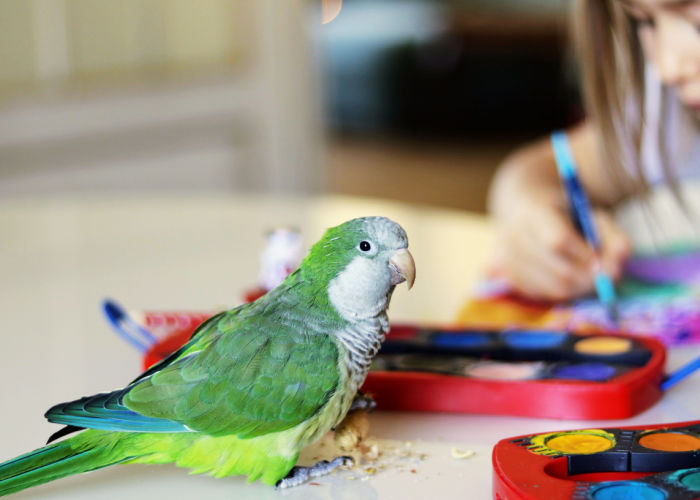
So, How Do You Entertain a Bird Outside of Its Cage?
There are various ways toentertain birdsoutside of their cage. For example, you can place bird toys so they can enjoy mentally-stimulating games like puzzles and fun toys like swings, ropes, ladders, hammocks, and bells.
Another simple way to entertain birds is to let them fly and exercise their wings. But if that appears too basic and you want to take more challenging and entertaining activities, you can teach your birds some cool tricks like:
- waving
- taking a bow
- playing dead
- fetching
- dancing
- and sitting on your shoulder
Your bird will have plenty of stimulation from working with you as you teach your pet new skills, and from the sweet goodies you will give him or her as a reward.
It also promotes socialization and deepens the relationship between your bird and you.
If your avian pet successfully learns some words and tricks, you can use them to entertain others. And what makes it more interesting is you can always add new techniques as your bird improves to help keep the process interesting.
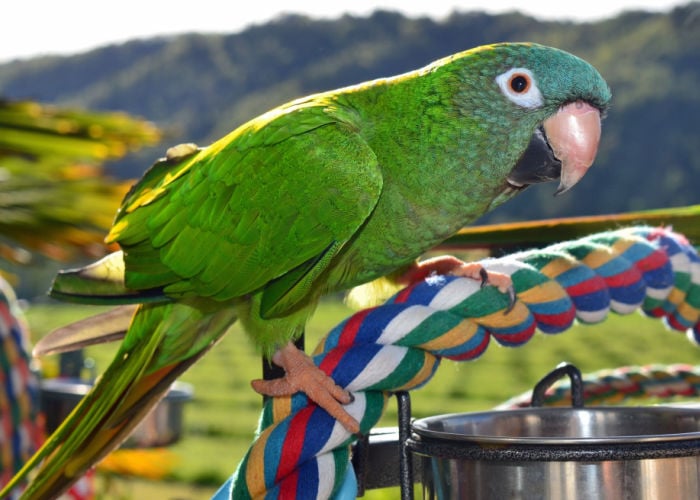
How Long Should aBird Be Out of Its Cage?
The answer depends on the type of bird since larger parrots need more mental stimulation outside their cage than small parrots.
But a good rule of thumb is to provide 2 hours of playtime outside the cage for tiny birds and 3 hours for larger species.
It should be enough to exercise, play, and explore the environment but not too long to make them feel homesick.
The Do’s and Don’ts Of Playtime Outside of the Cage
Birds can be a threat and exposed to various predators and threats when they’re outside the cage. So keep these do’s and don’ts in mind when your avian pet is outside of its home.
Don’ts When Your Bird is Playing Outside the Cage
1. Don’t Let Your Parrot Nip or Bite
You must not allow birds to physically hurt you during playtime or tolerate it because it could send a wrong message to your bird.
But what should you do if your avian pet playfully bites or nip at you during playtime?
You must pull away and command with a stern “no” to inform them that such action is unacceptable and will not be tolerated.
Repeat this course of action again and again until your bird learns not to nip or bite at all.
2. Don’t Force Your Parrot To Play
If you notice your bird doesn’t want to play, you must not force it at all costs because doing so can trigger anger and aggression. Sometimes, birds want to stay inside their cage and enjoy the day in the comfort of their home.
In that case, you must give your birds time and space until they’re ready to leave their home and enjoy playtime outside the cage.
But birds may lose interest in play when they’re sick too. So, watch for potential health issues and contact your avian vet if necessary.
3. Don’t Let Your Parrot Play Outside Your Home
Even birds with clipped wings may fly outside when a chance appears. So, you must ensure every window and door in your room is closed when your pet has playtime outside thebird cage.
If you want to take your bird outside the cage, you must restrain it from preventing it from flying away using a harness and leash. But make sure it’s not too tight.
It should be comfortable enough for them to move around but secure enough to ensure they won’t fly away.
4. Don’t Keep Pet Birds and Other Pets in One Place
保持鸟类和其他宠物是不安全的。Even if all your pets are accustomed to each other or friendly towards each other, birds may provoke them.
There are many cases where birds and other pets like cats and dogs get along with each other, yet the feathery companions have provoked the dogs. So the dogs attacked the birds, and the avian pets sadly gained injuries while others died.
Do’s When Your Bird is Playing Outside the Cage
1. Keep Play Sessions Short But Sweet
While playing with your bird outside its cage is fun, you must keep it short and sweet.
Birds generally like being in their cage because it offers security and comfort, and they grow attached to it. But it’s best to know when to give them a rest and put them back in their home.
The ideal playtime session is 20 to 30 minutes. This will allow your parrot to have recreational time outside its cage but not long enough to make them homesick.
2. Choose Safe Toys for Pet Birds
You should also bear in mind that you must use bird-friendly toys. Make sure every recreational toy is safe and free from potential hazards or toxins that may poison or cause injury to your tiny pet.
For example, treated wood contains harsh chemicals potentially toxic to parrots and other bird types.
You surely want to avoid unwanted health issues for your bird’s sake, so keeping dangerous toys away from your feathery companions is best.
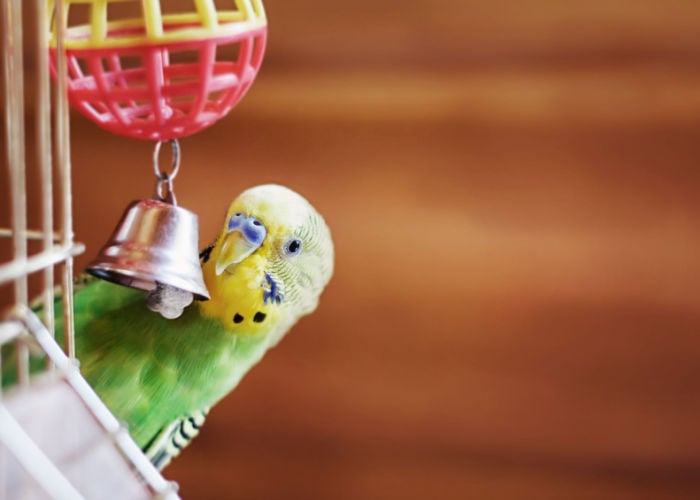
Frequently Asked Questions About Bird’s Playtime Outside of the Cage
Do birds need out-of-cage time?
Yes, birds need playtime outside the cage to promote exercise and stimulate your avian pets mentally. It’s important for all birds, both large and small species.
How does a bird feel when it is kept in a cage?
Birds always kept in a cage and lacking mental stimulation can develop aggressive, neurotic, and self-destructive behaviors.
How often should you let your bird out of the cage?
It’s best to provide playtime out of the cage every day for birds and let them fly around and explore for an hour or more.
But you must ensure every door and window is closed because your feathery pet can easily fly away, especially if its wings are not clipped.
Do birds get depressed in cages?
Birds living in cramped cages may suffer from fear, depression, aggression, and anxiety. It’s like sentencing your avian pet to solitary confinement.
Do birds get bored in cages?
Yes, birds can get bored and lonely when kept in a cage for a long time which then causes aggression and other self-destructive behaviors.
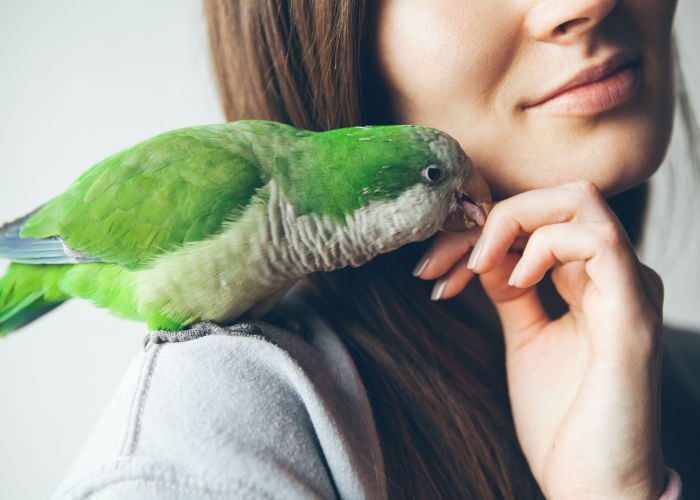
Final Thoughts About Bird’s Playtime Outside of the Cage
Before you give your bird playtime outside the cage, watch for signs of aggression and potential hazards that may harm your pet. Putting other pets in a different room ensures your avian companion’s safety.
The playtime outside of the cage doesn’t have to be long because 20 to 30-minute play sessions are enough. But supervise your bird and take precautions so it won’t fly away.
